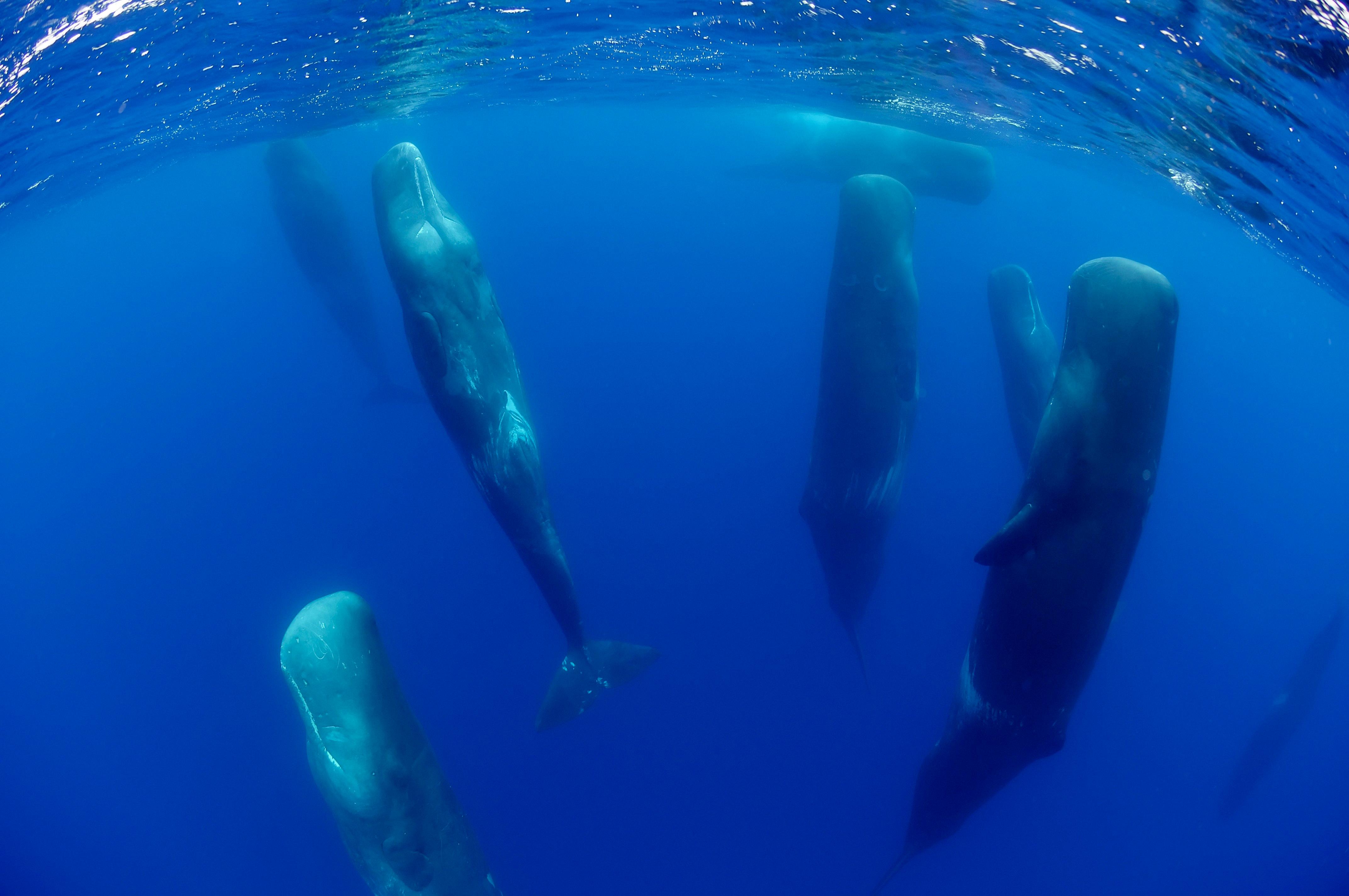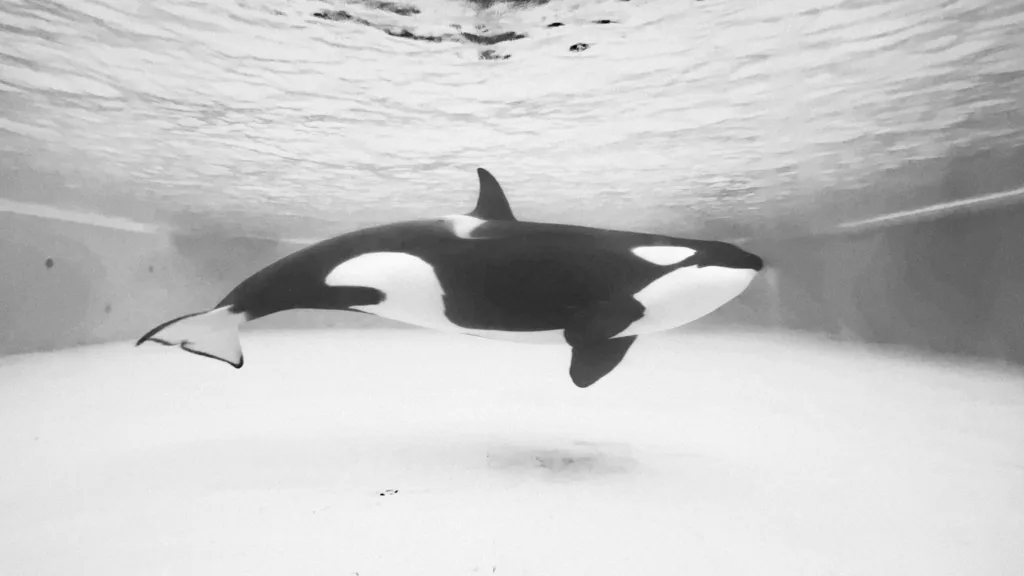Orcas, also known as killer whales, are fascinating creatures that have captured the interest of people all over the world. These mammals are fully aquatic, and they spend ther entire lives underwater. Despite this, they still need to breathe air from the surface, just like other marine mammals such as dolphins and whales.
Orcas have a special blowhole located at the top of their heads, which is like a large nostril. This blowhole allows them to take in air when they surface, which they do once every 5 to 10 minutes. When an orca surfaces, it takes a quick breath, and then dives back down into the water.
The average dive duration for resident killer whales is approximately 2.3 minutes. However, transient killer whales in the North Pacific have been recorded diving for up to 11.2 minutes. This variation in dive duration is likely due to differences in hunting strategies and prey availability.
Despite spending most of their lives underwater, orcas are still mammals and need to breathe air into their lungs. Like us, they cannot breathe underwater like fish can as they do not have gills. This means that they need to surface regularly to take in air.
The average whale can hold its breath for about 60 minutes. This is an impressive feat, but there are some whales that can hold their breath for even longer. The Sperm whale, for example, can hold its breath for about 90 minutes. However, the whale that can hold its breath the longest is the Curved Beak Whale, which can take long dives underwater for about 138 minutes!
Orcas are amazing creatures that can hold their breath for several minutes while diving underwater. They need to breathe air from the surface once every 5 to 10 minutes, and their average dive duration is approximately 2.3 minutes. While there are other whales that can hold their breath for longer periods of time, orcas remain one of the most fascinating and beloved animals in the ocean.
Frequency of Air Needed by Orcas
Killer whales, also known as orcas, are fully aquatic mammals and spend their entire lives underwater. Although they are capable of staying submerged for long periods, they still need to breathe air from the surface periodically. The frequency at wich they do so may vary depending on factors such as activity level, age, and environmental conditions.
On average, an orca needs to come to the surface to breathe once every 5 to 10 minutes. This means that they spend the majority of their time underwater, diving to depths of up to 500 meters (1,640 feet) in search of prey.
To breathe, an orca uses its blowhole, which is located at the top of its head and acts like a large nostril. When it surfaces, it exhales forcefully, creating a distinctive spout of mist and water that can be seen from a distance.
It’s worth noting that while orcas are highly adapted to life in the water, they are still air-breathing mammals and require oxygen to survive. Therefore, they must regularly come up for air to replenish their lungs and circulatory system.
Killer whales need to breathe air from the surface once every 5 to 10 minutes using their blowhole. This is an essential aspect of their biology and behavior, allowing them to thrive in their aquatic environment.

Source: scientificamerican.com
Maximum Length of Time Killer Whales Can Stay Underwater
Killer whales, also known as orcas, are one of the most fascinating marine animals in the world. These magnificent creatures are known for their impressive diving abilities and can stay underwater for a considerable amount of time.
The duration of time that killer whales can stay underwater varies depending on the type of killer whale. Resident killer whales, which are found in the North Pacific, have been recorded diving for an average of 2.3 minutes. These whales are known for their fish-based diet and spend most of their time in the same area, making short dives to catch their prey.
On the other hand, transient killer whales, which are also found in the North Pacific, have been recorded diving for up to 11.2 minutes. These whales have a more varied diet, including marine mammals such as seals and sea lions. They are also known to travel long distances in search of food, which may require longer dives.
It is important to note that the length of time a killer whale can stay underwater depends on a variety of factors, including the whale’s age, health, and activity level. Additionally, killer whales have the ability to regulate their heart rate and blood flow, allowing them to conserve oxygen and stay underwater for longer periods.
Killer whales are impressive marine animals that can stay underwater for varying lengths of time. Resident killer whales have an average dive duration of 2.3 minutes, while transient killer whales have been recorded diving for up to 11.2 minutes. However, the duration of time a killer whale can stay underwater is influenced by several factors such as age, health, and activity level.
How Long Can Whales Remain Underwater Without Air?
Whales are known for teir remarkable ability to hold their breath underwater for extended periods of time. The length of time that a whale can go without air varies depending on the species.
On average, a whale can hold its breath for about 60 minutes. This includes popular species such as the humpback whale, blue whale, and killer whale. However, some species can hold their breath for significantly longer periods of time.
The Sperm whale, for instance, is capable of staying underwater for up to 90 minutes. This is due to the unique structure of their body, which allows them to store more oxygen in their muscles and blood.
The Curved Beak Whale holds the record for the longest dive time. This species can dive for up to 138 minutes before resurfacing for air. This is made possible by their ability to slow their heart rate and reduce blood flow to non-essential organs, conserving oxygen for their vital organs.
It is important to note that these are maximum times and not all whales are capable of staying underwater for such extended periods. Factors such as age, health, and environmental conditions can also affect a whale’s ability to hold its breath.
Whales are remarkable creatures with unique adaptations that allow them to survive in their underwater habitat. While the average whale can hold its breath for about an hour, some species can stay underwater for up to two hours or more.
Do Orcas Need to Breathe Air?
As a species of whale, orcas are mammals and therefore require air to survive. Like all mammals, they have lungs and must surface to breathe air through their blowhole. Orcas can hold their breath for up to 15 minutes, allowing them to dive to great depths in search of food or to escape predators.
Orcas are part of the cetacean family, which includes all whales, dolphins, and porpoises. Unlike fish, who extract oxygen from water through gills, cetaceans must breathe air directly into their lungs. This means that they are unable to remain underwater for extended periods of time without surfacing for air.
Orcas are known for their impressive hunting abilities, which are aided by their large lung capacity and ability to dive to great depths. They are also highly social animals, often traveling in pods of up to 40 individuals. These pods communicate through a variety of vocalizations, including clicks, whistles, and songs.
Orcas must breathe air in order to survive. Like all cetaceans, they are mammals and must surface periodically to take in oxygen through their blowhole. Their impressive lung capacity and diving abilities contribute to their success as apex predators in the ocean.

Conclusion
Orcas, also known as killer whales, are fascinating creatures that have captured the attention of humans for centuries. They are fully aquatic mammals that breathe air from the surface once every 5 to 10 minutes using the blow hole at the top of their heads. Orcas are capable of holding their breath for extended periods of time, with the average dive duration for resident killer whales being approximately 2.3 minutes.
Transient killer whales in the North Pacific have been recorded diving for up to 11.2 minutes, whle the Sperm whale can hold its breath for about 90 minutes. The Curved Beak Whale holds the record for the longest dive underwater, lasting for about 138 minutes.
Despite their name, Orcas are not actually whales but belong to the dolphin family. They are highly intelligent creatures that have complex social structures and communication systems. Orcas are also apex predators and are known to hunt a variety of prey, including fish, seals, and even other whales.
Orcas face various threats from human activities, such as pollution, habitat destruction, and overfishing. It is important for us to understand and appreciate these magnificent creatures and take measures to protect them and their habitats.
Orcas are remarkable animals that have many unique characteristics and behaviors. They play an important role in their ecosystems and are a vital part of our planet’s biodiversity. It is our responsibility to ensure their survival and well-being for future generations to come.
